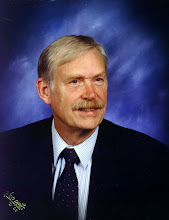
Pryor House, ca 1859
In a January 13 post to this blog I wrote “Homage to Writers” in which I said that the poet/novelist Wendell Berry and I were researching a project. His great-grandfather Frank Pollard and my great-grandfather Will Pryor both helped Confederate Gen. John Hunt Morgan escape from the Yankees in December of 1863. Pollard and Pryor may not have known each other; they lived several miles apart.
Pollard helped first. Morgan and his aide Captain Hines then went to Pryor’s house. Hines knew Pryor before the War, and after it they served together on the Kentucky Supreme Court. The two Confederate warriors went back to Tennessee where a new army was formed and they continued to torment Yankee forces until Morgan was killed. Hines became a sort of “super-spy” for the CSA.
In the course of investigation, I came across records of Camp Chase near Columbus, Ohio. It was a prison for captured Confederate soldiers and political prisoners. Camp Chase was the prison where Will Pryor was sent in 1862. He was a prominent lawyer in central Kentucky and a political prisoner. (My November 28, 2006 post dealt with the letter President Lincoln wrote about paroling Will Pryor.) Camp Chase was also the prison from which General Morgan and some of his officers escaped on November 27, 1863.
The records of Camp Chase were revealing. They included self-congratulatory documents about what a fine Christian prison it was, as well as letters from prisoners who told what a hell-hole it was. There were also official records each month telling how many and what kinds of prisoners were kept there, and how many escapes occur ed. But I am not sure how accurate the records were. During the month of November, 1863 when Gen. Morgan and five others escaped, the official count of escapes was zero.
There were side issues as well. Columbus was near the Congressional district (if not in it) where Clement Laird Vallandigham (the Copperhead) was elected to the House. Thus there was in the prison record a compilation of election results and some comments. The recorder was against the election of Vallandigham, so the comments were not favorable. Since President Lincoln brought about the destruction of some 200 printing presses of newspapers in the North with whom he disagreed, very few favorable comments about Vallandigham are still in the records. Because I am a first cousin, several times removed, of Vallandigham, I take notice of these comments.
This search into history has been rewarding as it has been fun. It has reinforced the lore handed down by both Wendell’s and my families. When Kentucky Justice Thomas H. Hines wrote about his adventure in 1891, he included the names of those who had helped him and Morgan escape. Pollard and Pryor were both included. Few seem to have known about Pollard’s assistance but Pryor had to flee to Canada until after the war was over. Pryor took the rap.
Far from over, the research will no doubt lead to some kind of article or book. At the moment I do not know which of us will write it. And I do not care as long as the story is told.
Civil+War Wendell+Berry John+Hunt+Morgan Clement+Laird+Vallandigham Copperhead
 Pryor House, ca 1859
Pryor House, ca 1859

1 comment:
Morgan and Co. Escaped from the Ohio Penitentiary, not Camp Chase.
http://www.amazon.com/Central-Historic-Prisons-America-Publishing/dp/0738560030
Post a Comment